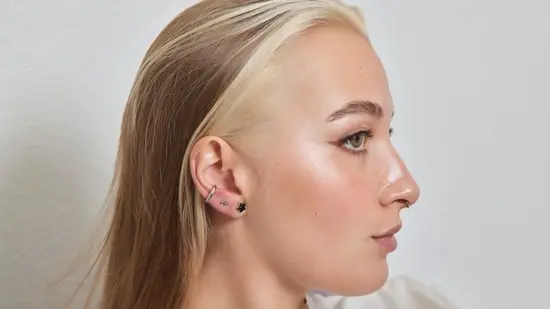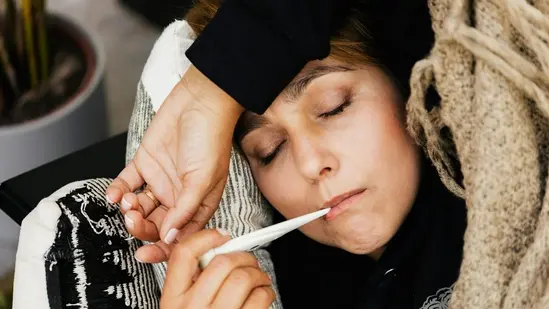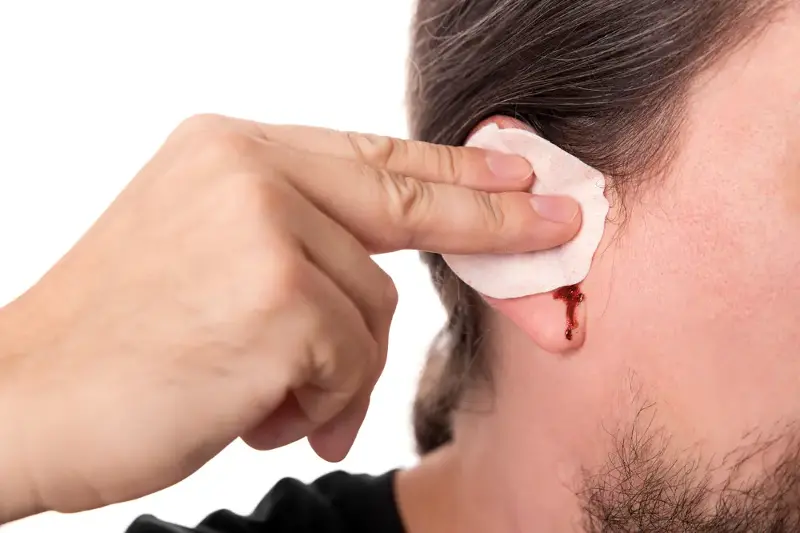
Piercings are a chic style statement now, with endless options to adorn your ear (or body) canvas, from dainty studs to chunky hoops. As much as it elevates your aesthetic, going for a piercing purely for its visual appeal while turning a blind eye to the risks and healing period can be dangerous. Moreover, those who have recently gotten a piercing often feel tempted to swap it out for a better-looking option, something that can potentially interfere with the healing process and lead to complications. It's important to know when your piercing is fully healed before you do any swaps.
In an interview with HT Lifestyle, Sahil Bali, Tattoo Artist at Devil’z Tattooz, unpacked the different stages of piercing healing and red flags that shouldn't be ignored.
Breaking down the basics of piercing healing, he said, “Piercings are more than just aesthetic choices; they’re intentional wounds that require proper care, attention, and patience to heal. As a professional piercer, one of the most common questions I get is, ‘How do I know if my piercing is healed?’ The answer depends on a few factors, including the area of the body pierced to how well aftercare routines are followed.”
Sahil Bali shared a detailed guide with us, covering all the essentials of piercing recovery, from the healing period (piercing-placement-wise) to emergency signs that indicate when you should visit a doctor:
What piercings look like during the healing period?

1.Initial phase (days 1–7)
- The area will be swollen, tender, and possibly bruised.
- Clear or pale yellow lymph fluid (not pus) may crust around the jewellery. This is completely normal. The body is treating the piercing as a wound and launching its natural healing response.
2. Healing phase (weeks to months)
- Swelling and tenderness gradually subside. The skin starts regenerating around the jewellery.
- There might still be some occasional redness, discharge, or slight discomfort if the piercing is bumped or tugged. You are not in the clear yet, but progress is being made
3. Maturation phase (several months to over a year)
- The fistula (the internal tunnel of skin around the jewellery) becomes strong, smooth, and resilient. There’s no more discharge, pain, or redness.
- A healed piercing moves freely without discomfort and looks consistent in colour with the surrounding skin
Piercing-wise wise healing period

1. Lobe piercings (non-cartilage)
- Healing time: 6-8 weeks
- Healing signs: Minimal swelling, the area is no longer red or tender, jewellery moves slightly without resistance or pain.
- Healed look: No discharge or crusting, skin tone is normal, and the hole appears clean and smooth.
2. Cartilage piercings (helix, tragus, conch etc.)
• Healing time: 4 months to 1 year
• Healing signs: Less swelling and redness over time, but may still be sensitive for months. Jewellery might feel tight at first and loosen up as swelling reduces.
• Healed look: No pain or warmth around the area, and it doesn’t react to pressure or movement. No discharge or flaking.
3. Body piercings: Navel and other surface piercings
• Healing time: 6 months to over a year (depending on location and lifestyle)
• Healing signs: Decreased redness and swelling, reduced sensitivity. Jewellery should not cause discomfort with movement or pressure.
• Healed look: The entry and exit points appear smooth, skin-colored (or slightly darker depending on natural healing), and show no signs of irritation or crusting.
Red flags

1. Prolonged redness and swelling
- Swelling that worsens after a few days instead of subsiding.
- Skin feels hot to the touch around the piercing.
2. Thick, green or yellow pus
- Unlike normal, clear or pale crusting, true pus is thick, smelly, and often greenish-yellow.
3. Severe pain
- A dull ache is normal in early healing, but sharp, shooting pain and tenderness that worsen can signal a problem.
4. Fever or chills
- A systemic response, like fever, could indicate the infection is spreading beyond the piercing site.
5. Red streaks leading away from the piercing
- These are signs of potential lymphangitis, a serious condition that requires immediate medical attention.
6. Bumps that grow or leak
- Small, non-painful bumps may be hypertrophic scarring or irritation, but large, oozing or tender bumps can be abscesses.
When to see a doctor?

• If you’ve tried basic wound care (cleaning with saline, avoiding trauma) for 24–48 hours, and symptoms worsen.
• If you’re experiencing any of the red flag symptoms listed above.
• If lymph nodes near the area become swollen or tender.
• If your body is reacting with systemic symptoms (fever, chills, fatigue.)
Note to readers: This article is for informational purposes only and not a substitute for professional medical advice. Always seek the advice of your doctor with any questions about a medical condition.
ALSO READ: Getting tattoo for the first time? Know what you should eat and more in this complete guide for beginners
